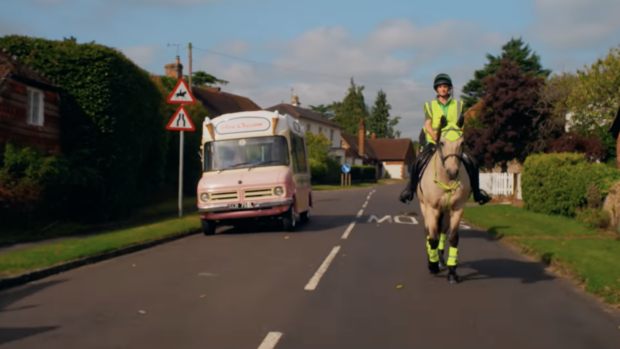Last year, there was an estimated 3,000 horse-related accidents on Britain’s roads, yet some riders have no choice but to exercise on the roads from time to time.
Inspector Alan Hiscox from the Metropolitan Mounted Training Unit says: “I cannot stress strongly enough how important it is to have reflective and fluorescent clothing for horse and rider. Always think ahead and when confronted with a problem or potential hazard, it is better to divert either down a side road or turn around and retrace your steps.”
James Barclay, master of the Cottesmore Hunt comments: “Precautions should be taken by riders to warn motorists that they are there. The general public also need to be educated about how to pass horses on the roads. Good manners are important for the rider, but are also equally important for other road users.”
Some important rules should be followed when riding on our roads, whether they are urban roads orquiet country lanes.
Advice to riders
Before riding on the road, make sure you have adequate insurance cover.
Always ride out on the roads with reflective and fluorescent clothing for both horse and rider, especially if riding at night or in dull weather (rule 36 of the Highway Code).
When riding on the roads, always use a saddle and bridle; if leading a horse on the road, the led horse must wear a bridle. Make sure tack is in good repair.
Rule 34 of the Highway Code stipulates that an approved helmet fastened securely should be worn – all children under the age of 14 must comply with this.
It is against the law to ride a horse on a footpath, pavement or cycle track. You are allowed to ride on grass verges if the local council doesn’t have a by-law preventing this. It is dangerous and stupid to canter your horse on the verge for obvious reasons.
You may ride two abreast when the road conditions allow, although if you areapproaching a narrow lane, humped bridge or traffic is building up behind you, it is advisable to revert back to single file.
Large groups of riders should be divided into smaller groups of four riders, leaving a gap of 30m (100ft) between the sets of horses for motorists to overtake one group at a time.
Plan your route to try to avoid blind spots on the road or difficult junctions.
Inexperienced riders/horses should not ride out alone and should always be placed on the inside of the ride next to the kerb.
Carry identification for both you and your horse and a mobile phone in case of emergencies.
It is advisable for riders to take the BHS riding and road safety test.
Drivers beware
Pass horses wide and slowly, trying to make eye contact with the handler.
Keep your distance – especially where you may not be able to overtake immediately.
Brake in plenty of time, turn down loud music and never beep your horn.
Both horse riders and drivers should be aware of the Highway Code.
For more information on the British Horse Society’s riding and road safety test and recommendations (tel: 01926 707700).
Stay in touch with all the news in the run-up to and throughout major shows like London International and more with a Horse & Hound subscription. Subscribe today for all you need to know ahead of these major events, plus online reports on the action as it happens from our expert team of reporters and in-depth analysis in our special commemorative magazines. Have a subscription already? Set up your unlimited website access now




